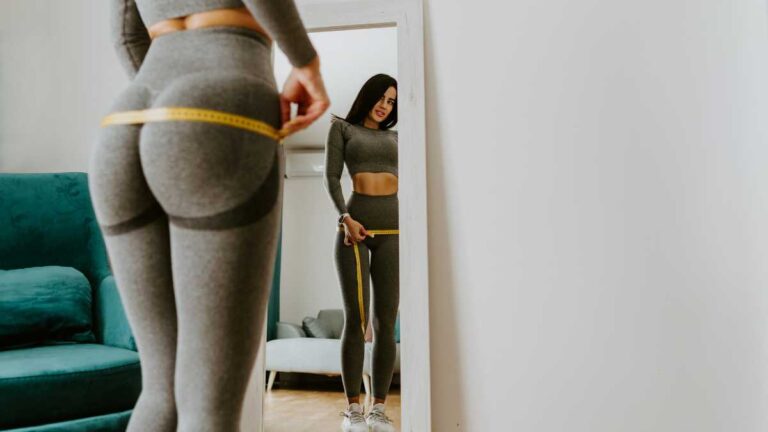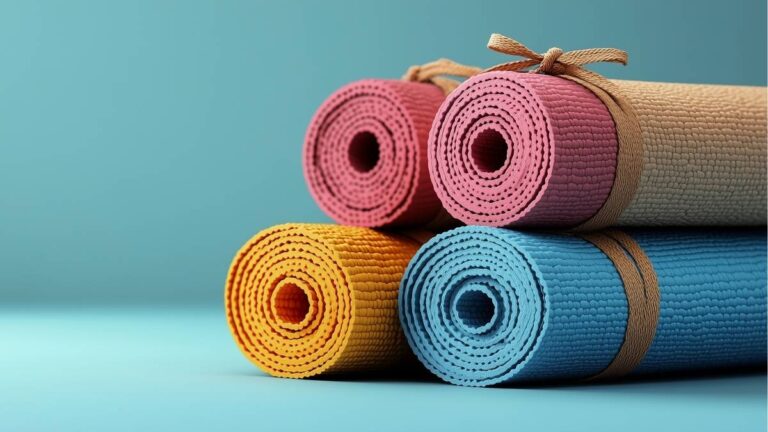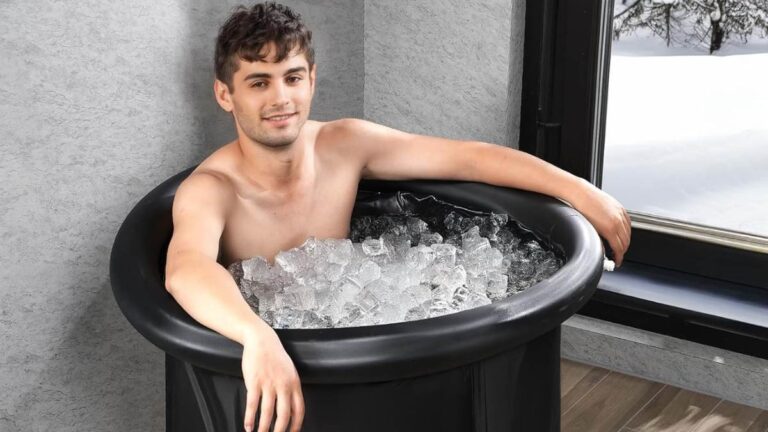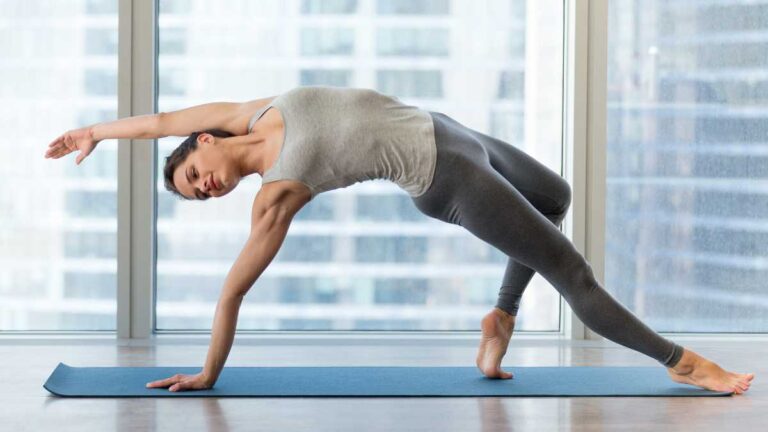Pilates Vs. Yoga – Which One Brings Flexibility Faster?

Last Updated on August 3, 2025
Ever feel tight, tense, or just not as bendy as you used to be?
You’re not alone—and chances are, you’ve heard that Pilates or yoga might help. Both are go-to methods for improving flexibility, but they take very different routes to get you there.
As a registered nurse and wellness consultant, I often get asked which is better—and honestly, it depends.
In this post, we’ll do an in-depth Pilates vs. Yoga comparison, how each method works, what makes them unique, and how to choose the one that fits your body and goals best.
Whether you’re just getting started or looking to deepen your flexibility practice, you’ll find practical tips, comparisons, and maybe even a few “aha” moments along the way.
Let’s get into it—no toe-touching required.
What Is Flexibility—And Why It Matters More Than You Think
Flexibility isn’t just about being able to twist yourself into a pretzel or ace a split. It’s a critical part of how your body moves, performs, and even rests.
At its core, flexibility is the ability of your muscles and joints to move through their full range of motion, without restriction or pain.
And here’s the kicker: you use flexibility in everyday life way more than you think.
When you:
- Bend to tie your shoes
- Reach for something on a high shelf
- Sit cross-legged on the floor
- Turn your head to check your blind spot while driving—You’re relying on flexible joints and muscles.
Now imagine doing all those things without feeling stiff or tight. That’s what healthy flexibility offers: ease, comfort, and freedom of movement.
According to the Mayo Clinic, maintaining flexibility helps reduce injury risk, enhances muscular coordination, improves posture, and supports overall mobility—especially as we age.
In fact, research shows that regular flexibility training can even reduce lower back pain, improve balance, and help you sleep better.
So how does one train for flexibility? That’s where movement-based practices like Pilates and yoga come in.
Each method has its own rhythm and strategy.
Yoga leans into long, static stretches that gradually release tension.
Pilates incorporates flowing, controlled movements that elongate and strengthen muscles simultaneously.
Think of it this way:
Yoga is like slowly softening a stiff rope by gently pulling on both ends.
Pilates is more like stretching a spring while keeping it strong and coiled for support.
The key to success with either? Consistency, breathwork, and tuning into your body—not forcing it.
In the next section, we’ll zoom in on Pilates—what it is, how it works, and why it might be your secret weapon for flexible strength.
Read Also: How Pilates Can Help With Back Pain?
Pilates 101 – How It Improves Flexibility

If you’ve ever seen someone gliding on a Reformer machine or heard about “engaging the core” in a workout, chances are they were doing Pilates.
Created by Joseph Pilates in the early 20th century, this method was originally called “Contrology”—and that name gives you a big clue into how it works.
Pilates is all about controlled, precise movement. While it’s known for building core strength, Pilates also plays a major role in increasing flexibility—just not in the way you might expect.
Instead of long, passive stretches (like in yoga), Pilates focuses on dynamic stretching—that is, stretching while the body is in motion.
Think leg circles, spinal twists, and arm sweeps that gently lengthen muscles while staying actively engaged. This type of movement trains your body to be flexible and functional—meaning you’re not just limber, you’re also strong and stable.
So, How Exactly Does Pilates Help With Flexibility?
It lengthens muscles as you strengthen them.
You’re lying on a mat, lifting one leg while keeping the other anchored. The movement gently pulls your hamstrings into a stretch—but your core is engaged, your spine is aligned, and every motion is deliberate.
That combo of strength + stretch builds flexibility without risking overstretching or injury.
It works through full range of motion.
Pilates exercises guide you through smooth, flowing patterns that mirror real-life movement. Over time, this helps your joints and muscles unlock tight spots and improve their natural mobility.
It corrects imbalances.
Many of us are tighter on one side or have poor posture from sitting too much. Pilates zeroes in on alignment, helping release tension and retrain your body to move more efficiently.
Research backs this up. A study in the Journal of Bodywork and Movement Therapies found that participants who practiced Pilates just twice a week saw significant improvements in both hamstring flexibility and postural alignment after 8 weeks.
In short? Pilates doesn’t just make you longer—it makes you smarter about how you move. And that kind of flexibility pays off well beyond the mat.
Read Also: How Many Pilates Classes Should You Take A Week?
Yoga 101 – How It Improves Flexibility

When most people think of flexibility, yoga is often the first thing that comes to mind—and for good reason.
With its roots stretching back thousands of years, yoga has long been celebrated for its ability to loosen tight muscles, calm the nervous system, and leave you feeling longer, lighter, and more at ease.
But yoga isn’t just about folding yourself into a pretzel. At its core, yoga is a mind-body practice that combines breath, movement, and stillness to build both physical and mental flexibility.
Here’s How Yoga Helps Improve Flexibility
It uses static and passive stretching.
Unlike the dynamic movement of Pilates, many yoga poses involve holding a stretch for several breaths, which gives your muscles and connective tissues time to gently release tension.
Think of poses like Forward Fold, Pigeon, or Butterfly—the longer you stay, the deeper the stretch goes.
It targets the whole body.
Whether you’re doing a flowing Vinyasa sequence or a slow, restorative session, yoga doesn’t just focus on one area. Over time, your bum, hamstrings, shoulders, spine—even your toes—start to feel more open and mobile.
It’s deeply connected to breath.
Yoga encourages you to sync movement with breath, creating a rhythm that promotes relaxation. And when your nervous system relaxes, your muscles naturally release. It’s like your body finally gets permission to let go.
One study published in the International Journal of Yoga found that regular yoga practice significantly improved flexibility, balance, and muscular endurance in participants over a 10-week period.
Even just 15–20 minutes a day can create noticeable changes in how your body feels.
If Pilates is like a disciplined dance for the deep muscles, yoga is more like a long, luxurious stretch for your entire body—with a side of zen.
It’s particularly helpful if your muscles are chronically tight from stress, poor posture, or sitting too much (hello, desk jobs).
And the best part? You don’t need to be flexible to start yoga—you just need to be willing to show up, breathe, and let your body do the rest.
Pilates Vs. Yoga – Side-by-Side Flexibility Comparison

So now that we’ve looked at how both Pilates and yoga support flexibility in their own ways, let’s put them head-to-head.
Think of this as your side-by-side cheat sheet to understanding how each practice works for different goals, body types, and preferences—especially when it comes to getting more bendy without breaking.
Flexibility Comparison Chart
| Feature | Pilates | Yoga |
| Stretching Style | Dynamic (stretch + movement) | Static & passive (held poses) |
| Breathwork | Controlled, usually inhale/exhale per move | Deep, rhythmic breathing with poses |
| Core Engagement | High—core is the foundation | Moderate—core used, but not always emphasized |
| Focus Area | Targeted muscle groups | Full-body flexibility |
| Mind-Body Element | Physical control + awareness | Strong emotional + mental connection |
| Equipment | Mat, Reformer (optional props) | Mat, optional props (blocks, straps) |
| Vibe | Functional, alignment-focused | Flowing, meditative or energizing |
| Best For… | Posture, injury recovery, functional flexibility | Stress relief, joint mobility, overall looseness |
What Does That Actually Mean?
Let’s break it down in plain English:
- If you’re looking for flexibility with strength, Pilates might be your jam. It lengthens muscles while keeping them engaged—great for people who want to improve posture, core control, and everyday movement.
- If you want deep, slow stretching and a calming experience, yoga shines. You’ll hold poses long enough to truly soften tight areas—and you’ll likely leave feeling more mentally clear, too.
- Pilates can be more structured and precise—ideal for those who love clean technique and don’t mind counting reps.
- Yoga can feel more fluid and spiritual—perfect if you like variety, breathwork, or meditative movement.
And guess what? It’s totally okay to enjoy both. Some people alternate days, while others use yoga to unwind after a Pilates session. Each method fills in where the other might be less focused.
Quick Example:
Let’s say you’ve got tight hamstrings from sitting all day:
- A Pilates workout might include leg lifts and hamstring stretches with controlled core engagement to help lengthen and strengthen.
- A yoga class might offer a long-held Downward Dog, Pyramid Pose, or Seated Forward Fold to gently release tension.
So while both paths can lead to improved flexibility, the journey feels very different. The question isn’t “Which one is better?”—it’s “
Which One Is Right For You? Ask Yourself These 5 Questions
Still on the fence? Don’t worry—you’re not alone. Many people feel torn between Pilates and yoga, especially when both seem to offer similar benefits.
The truth is, your lifestyle, mindset, and movement goals can all play a role in figuring out which one fits better.
Ask yourself these five simple questions to help point you in the right direction:
1. Do you enjoy slow, meditative movement—or precise, controlled motion?
If you find peace in flowing, breath-led movement and holding stretches while you clear your mind, yoga might be your thing.
If you prefer structure, precision, and feeling like every muscle is working with intention, you’ll probably vibe with Pilates.
2. Are you currently recovering from an injury or dealing with chronic pain?
Pilates is often used in physical therapy for a reason—it focuses on alignment, control, and strengthening the smaller stabilizing muscles.
Yoga can also be helpful, especially restorative styles, but some poses may need to be modified depending on your condition.
3. Do you want to improve posture and core strength along with flexibility?
Hands down, Pilates is your best bet here. Its core-first philosophy naturally improves your posture and spinal alignment.
Yoga improves body awareness too, but the core isn’t always the star of the show.
4. Do you crave a sense of calm or emotional release during your workouts?
Yoga’s focus on breath, stillness, and presence makes it incredibly powerful for managing stress, anxiety, or emotional overload.
Pilates can also be calming—but it’s more about focus and control than emotional connection.
5. Are you someone who enjoys mixing things up—or sticking to a routine?
- Yoga comes in many flavors—slow, fast, spiritual, sweaty, or silent—so it’s great for variety-seekers.
- Pilates tends to follow a more structured flow, which can feel super satisfying if you like progression and repetition.
By now, you might be leaning one way—or maybe realizing that you don’t have to choose at all. The beauty is, both practices can be tailored to your needs, and they actually complement each other more than they compete.
Can You Combine Pilates And Yoga For Even Better Results?
Short answer? Absolutely. In fact, pairing Pilates and yoga can give you the best of both worlds when it comes to flexibility, strength, and whole-body wellness.
While these two practices have different approaches, they complement each other beautifully.
One emphasizes flow and stretch, the other builds control and alignment—and together, they create a well-rounded movement routine that targets your body from multiple angles.
Here’s How They Work Together
- Pilates strengthens the muscles that yoga stretches.
Think of your hamstrings, hip flexors, and shoulders. Yoga lengthens them with deep poses, while Pilates strengthens the surrounding stabilizer muscles to support that new range of motion.
- Yoga softens tight areas that can limit Pilates form.
Struggling to hold a Pilates move with proper alignment? Tight hips or a stiff spine could be the issue. A few yoga flows a week can loosen things up, making Pilates more effective and comfortable.
- Breath and body awareness deepen on both ends.
Both practices emphasize conscious breathing, but in different ways. Yoga’s breathwork grounds you, while Pilates teaches you how to breathe with control during movement—a skill that carries into everyday life.
Try This Weekly Blend:
Here’s a simple way to get started with both, even if you’re short on time:
Monday: 20-minute Pilates core + stretch
Wednesday: 30-minute gentle yoga flow
Friday: Pilates for posture and glute work
Sunday: Restorative yoga or yin-style deep stretch
The combo creates balance—muscles that are strong but supple, joints that move freely, and a body that feels more aligned from the inside out.
Common Myths – Busted!
When it comes to Pilates and yoga, myths are everywhere—and they often keep people from giving either a fair shot. So, let’s clear the air and bust a few common misunderstandings that might be holding you back from unlocking your flexibility.
1: You have to be flexible to do yoga.
Not true. Flexibility is a result of yoga, not a requirement. Every pose has modifications, and props (like blocks or straps) are there to meet you where you are. You don’t have to touch your toes to begin—just show up.
2: Pilates doesn’t improve flexibility—it’s just about abs.
Pilates is definitely core-focused, but it’s not just crunches on a mat. The flowing movements are designed to lengthen and strengthen at the same time. That “stretched out” feeling you get after a session? That’s flexibility in action.
3: You can only choose one—yoga or Pilates.
Why pick a side when you can have both? These practices aren’t in competition—they’re partners. Combining them can actually enhance results by addressing flexibility, stability, and recovery in a well-rounded way.
4: Yoga is just stretching with candles and chanting.
While some styles do lean spiritual or meditative, many modern yoga classes are dynamic, strength-building, and highly practical. From sweaty power flows to chill deep stretches, there’s a style for everyone.
Bottom line?
Forget the myths. Your journey with movement is personal—and flexible (pun fully intended).
Read Also: How Long To See Pilates Results?
Tips To Get Started With Either (Or Both!)
Whether you’re leaning toward yoga, Pilates, or planning to dabble in both, the key is to start simple, consistent, and judgment-free. You don’t need a fancy studio, expensive gear, or superhuman flexibility—you just need curiosity and a comfy spot on the floor.
Here’s how to ease into either practice with confidence:
1. Start with beginner-friendly videos.
YouTube is a goldmine for short, approachable sessions. Look for certified instructors who clearly cue movement and offer modifications. Don’t worry about keeping up—pausing is part of the process.
2. Use props to support your body.
Yoga blocks, straps, and bolsters can make poses more accessible. In Pilates, a small ball or resistance band can enhance movement without adding strain. No props? Rolled towels and sturdy books work in a pinch.
3. Create a mini routine.
Start with 10–20 minutes, 2–3 times a week. Try:
Monday: Gentle yoga flow
Wednesday: Beginner Pilates mat session
Saturday: Mix of both (15 minutes each)
The goal is progress, not perfection.
4. Listen to your body—not your ego.
If something feels too intense or awkward, pause or modify. Both yoga and Pilates are about working with your body, not against it.
5.Make it yours.
Prefer relaxing music? Add it in. Want to practice barefoot on your carpet? Go for it. Your mat, your rules.
Starting small and sticking with it is where the magic happens. You’ll be amazed at how much more freely your body moves—even after just a few sessions.
Conclusion – Your Flexibility, Your Choice
At the end of the day, flexibility isn’t about touching your toes or mastering a backbend—it’s about feeling free in your body, whether you’re getting out of bed, playing with your kids, or walking without stiffness.
Both Pilates and yoga offer powerful paths to that freedom.
Yoga brings deep, mindful stretches, inner calm, and full-body openness.
Pilates builds controlled strength, postural alignment, and dynamic range of motion.
One isn’t better than the other—they’re just different tools for different needs. Some people find their sweet spot in a weekly yoga flow. Others thrive with the structure of Pilates. Many blend both and enjoy the balance it brings.
If you’re not sure where to begin, start small. Try a short online class. Stretch in your living room. See how your body feels. And remember—your journey doesn’t need to look like anyone else’s.
Your flexibility is uniquely yours. And whether you reach it through breath, movement, or mindful strength, the most important thing is that you keep showing up for yourself.
So unroll that mat, take a deep breath, and get moving—your most flexible, functional self is waiting.
So don’t feel like you have to choose sides in the Pilates vs. yoga debate. With a little mixing and matching, you might just unlock your most flexible, functional self yet. feels better for you?”






